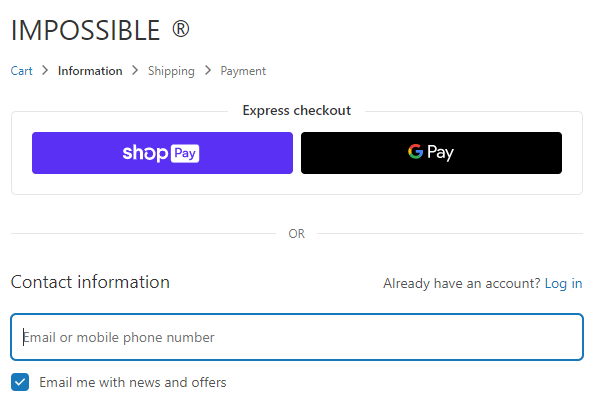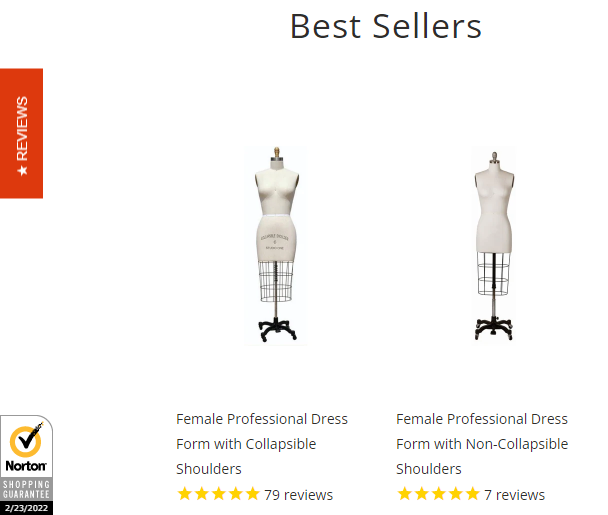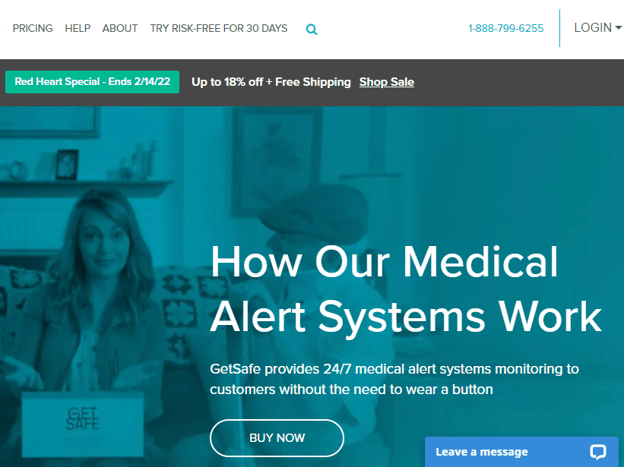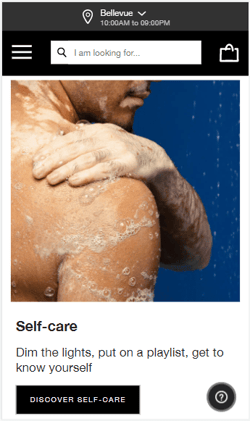If Your Shopify Store Offers Any of These 8 Experiences, You're Winning!

Keep the good stuff coming
Subscribe to our blog newsletter and get monthly content that helps you manage product data smarter.
No spam. Just real value.
With 3.76 million Shopify stores in the world, the platform is seeing an unprecedented expansion. 2020, alone, saw the giant cater to 457 million buyers.
That's 16 times more than in 2014.
But the thing is: joining the pack is simple. However, ensuring that your conversions grow as steadily as the number of Shopify users is where it gets tricky. Considering that 32% of customers are likely to stop doing business with a brand after a single bad customer experience, while shoppers are also 2.4 times more likely to stick with a brand that can solve their issues quickly, we begin to understand just how important customer experience is for your store.
Let’s examine eight key tactics you can use to ensure your Shopify store offers a world-class customer experience and support. One that will help you compete with the thousands of other stores offering the same kinds of products.
1. Offer express checkout
Modern shoppers are impatient folk.
As their attention span is now shorter than that of the average goldfish, they want to make their purchase as fast as possible and move on to the next digital distraction. Complex checkout processes were the cause of 18% of abandoned carts in 2021, single-handedly causing a staggering loss of revenue.
Improved checkout design can, in fact, improve conversion rates by as much as 35%, which makes this simple optimization incredibly lucrative. Right now, express checkout of the PayPal or Amazon Pay variety also happens to be easy to integrate, and it will also help you gain the trust of your customers, as you send clear security signals inherent to the use of major-name checkout processors.
Express checkout integration should be a no-brainer as you will also be able to:
- Keep your shoppers on your product pages
- Speed up page loading times
- Offer a fully mobile-optimized process
Shopify already offers accelerated checkout options, integrated with Apple Pay, Google Pay, Amazon Pay, and PayPal. Activating these checkout buttons is also made super simple, so you won’t even need to spend too much time tackling this improvement, nor do you need any extensive optimization knowledge.
Let’s take a look at express checkout in practice. The brand Impossible offers it in their shop, and you have two check-out options to choose from. You can be out of there in three clicks, essentially two minutes or less, especially if you know your credit card number by heart or if you’ve already added it to your wallet.

The interface is easy to understand, non-demanding, and visually pleasing. In short, it checks all the boxes and should be at the top of your list of customer experience enhancements.
2. Address your audience’s most common concerns
Other common reasons why Shopify carts get abandoned will include extra, previously unspecified costs, unclear pricing and shipping costs, and a lack of trust. True, customers may abandon their carts today to come back to them at a later stage, or they may simply find a better price with a different retailer. This, unfortunately, is not something you can address directly. If a customer needs to get in touch to ask a rather obvious question (like “how much is shipping” or “do you ship to X”), you will most likely have lost them. By proactively addressing the most common concerns that are within your power to remedy, you can significantly decrease cart abandonment rates and improve the overall experience.
Here’s how:
Clearly display shipping costs
First of all, your customers will want to know how much it will cost to get their hands on an item. Shipping costs directly impact conversion rates, and you need to make sure that the perceived value of the product overcomes any incurred shipping costs. If shipping costs more than the product (or just about), you’ll be tanking a customer’s experience.
A simple way to overcome this obstacle is to clearly display the costs of shipping (especially if a customer has already logged into their account with your store) no later than they enter their country. Or, better yet, offer free shipping for a certain price point. That will be an amount that is worth your while and that is also reasonable for your customer base. Colourpop does this quite effectively with their header banner and reasonable prices.

You can very simply emulate them in your own Shopify store and improve on their tactic by making the banner sticky.
Provide transactional security
Customers will also hesitate to make a purchase if they don’t trust your website. Don’t take it personally; perhaps they’ve just never shopped with you before and want to be as safe as possible on the internet. A simple and effective way to lend more trust to your pages is to improve your transactional security. This is done via enhanced encryption or the use of a third-party tool. The Norton Shopping Guarantee widget is a good choice. You can see it in action on the Dress Forms USA website.

Choose a recognizable platform that you trust and whose requirements you meet, and incorporate the widget into your site.
Write a clear returns policy
At least 30% of products purchased online are returned.
A customer may have received the wrong item or it may have been damaged en route, but chances are they just don’t like it and we're hoping for something different. Furthermore, 67% of shoppers will check out your returns policy before they make a purchase. You want to ensure that nobody is dissuaded from checking out in the first place by making your returns policy clear and fair.
Check out this Pro Sound Gear one. Note how it clearly highlights the main facts (the window for full refunds minus shipping costs and exchanges). Plus, it’s written in a language anyone will be able to understand.

This is your main goal. Don’t use obscure language, and tell shoppers exactly how to return an item and what it will cost them.
Offer guarantees and warranties
Shoppers will also know what happens if their product gets damaged – especially if they are buying a more expensive item they expect to enjoy for years to come. Offering a warranty is the simplest way to overcome any hesitations in this regard.
Display a trust badge on your product pages.
Gili did this effectively, and they’ve incorporated their “2-year warranty” badge with others that aim to provide a sense of security and promote customer trust. As long as you make the information highly visible, you’re golden.

3. Be available in person
There will always be customers who want to get in touch, and they are most likely to do so either by email, phone, or in person.
The more channels you can offer, the better.
By limiting your customer service touchpoints to a single (or just a couple) of channels, you will likely alienate quite a portion of your customer base. And while you don’t need to be available 24/7, you should tell your customers when they can expect to hear back from you. If they are aware of the fact that you are off at the time of contact, they won’t mind waiting as much.
You should also explore the benefits of utilizing an AI-powered assistant in your customer service department. It won’t be able to handle all inquiries, but it will certainly be able to cushion a lot of expectations and take some load off your human agents.
A friendly piece of advice: always offer a direct line to a human agent. Don’t make the customer jump through chatbot hoops first. Upwork does this, and it makes for some rather frayed customer nerves.
Highlight your availability clearly across your website. Here’s what not to do: I Love Parcels only features their contact details in their footer and on their contact page, and the information doesn’t encourage making a connection.
What works much better is what Get Safe has done. Their phone number is displayed at the top of the page, and it’s clickable. They offer a chat feature as well, so you are able to reach a human immediately. Considering their target demographic is in large part older, this works amazingly well.

When selecting your customer support communication channels, always consider what your target audience needs, and not just what the simplest one to implement would be.
4. Offer real-world shopping experiences
The one drawback of owning a Shopify store versus a brick-and-mortar one is that your customers never get to experience all the perks of in-person shopping. They can’t touch or smell the product, they can’t see the colors in real life, and they will never be quite sure about the size.
You’ll never be able to compensate for all of these drawbacks, but what you can do is use augmented reality to take shopping with you to the next level. It’s not for everyone’s budget, but if you have the means, it’s an interesting customer experience tactic to consider.
Currently, 32% of customers use AR while shopping and 71% of them claim they would shop more if they used AR. What they like about it is the personalization and sense of reality it offers. It’s nice to be able to see what a product would look like on them or in their home.
A good brand to take note of that is enjoying the AR revolution is Warby Parker, which lets you try on their glasses via their mobile app. Sephora is doing the same thing with their Virtual Artist app, letting you try on the makeup they carry on your own virtual face.
If you’re able to explore AR, make sure you offer a fully personalized experience. Let customers see how your products will slot into their lives by uploading their own images.
5. Personalize, personalize, personalize
Your Shopify store also needs to be as personalized to the person browsing it as possible. There are numerous ways you can tailor someone’s time with you. Most notably, you can do it by offering product recommendations based on the customer’s past purchase history, their location, and any other data that you’ve already collected about them.
What you need to be particularly mindful of is data collection in a post-GDPR world. You’ll have to ensure that you are compliant with all the relevant legislation. You’re still able to collect data, albeit you will need to keep it safer and anonymous.
You can also offer recommendations based on the purchasing history of others who have bought the same item. Check out how The Book Depository is doing it. If you have an account, the homepage will display books based on your recent browsing history. Even if you don’t, a product page will list recommendations based on the tastes of similar shoppers and the most popular books in a certain category.

You can also recommend products that go together, products in a similar color or size, discounted products from the same category, and so on. As long as the customer feels you understand them, they are more likely to keep browsing and spending.
6. Keep product information up to date
When your customers come across product information that is out of date, they are very likely to click off your store immediately. After all, how can they now trust that any of the information that you have listed is correct?
Using the most recent and absolutely correct product descriptions, product photos and videos, product names and page titles, stock numbers, and so on is crucial.
If your Shopify store is small, you’ll probably be able to manage keeping it up to date manually. However, the more items you stock, the more difficult this task will become. You’ll soon need a tool for the job.
An automated solution like Plytix Product Information System (PIM) will keep your visitors informed at all times, and you won’t ever have to worry about updating a product page. This tool will ensure your customers have the best possible experience on your pages, with accurate, up-to-date information. It will also save you plenty of time, allowing you to reinvest it in marketing and growth.
7. Use explainer videos for complex products
More complex products come with more complex shopper hesitation. Buying a mug is easy – buying something as simple as a toothbrush is infinitely more complex. Buying any piece of tech will be infinitely more complex, cubed.
In order to improve CX and boost your conversion rates, you need to cut through the noise and effectively communicate the value of your product in as little time and space as possible. People don’t want to read lengthy and complex product descriptions. They want to know what the product can do, how it will benefit them, and how it will fit into their life. Video is thus the perfect format for communicating a lot of complex yet important information.
This is especially true if you are selling decorative or visual products. No amount of text will ever be able to compete with even a ten-second video.
US Fireplace Store has a great example of an explainer video that shows customers how one of their more complex products work. They do have a long product description on the page too, but the video communicates all the key information much better. After all, how would a customer know how a Wi-Fi-operated fireplace works?

You can stick to using this type of video for the most complex of your inventory, but you can also shoot very short videos for all of your products, simply showing them in real life. They will certainly improve conversion and retention rates, as customers are four times more likely to watch than to read about a product.
8. Optimize for mobile shopping
Mobile-first has been a thing in ecommerce for a good long while now, which makes the sheer volume of poorly mobile-optimized Shopify stores astounding. It’s no longer enough to just have a UI that is adequate and that passes muster. You need a UX design that has actually been created with mobile in mind, and not merely a slightly changed version of your desktop site.
Mobile commerce accounts for $3.56 trillion in 2021, and this is simply a slice of the cake you can’t afford to ignore. If you alienate your mobile shoppers by not taking mobile customer experience seriously… well, you get where we’re going with this.
You need to focus on being personal, being readily available, and understanding how a shopper uses their mobile phone. Learn how they scroll, what kind of information they want to see, where they place their thumb, and so on.
Certainly a lengthy and extensive project, a mobile CX redesign can help you attract a whole new set of customers.
Lush has a great mobile website that is based on their desktop home but that still caters to the specific needs of mobile users. Every element is placed strategically, the navigation is easy, the checkout is seamless, and you will never find yourself lost or feel a page is cluttered and does not fit into the palm of your hand.

Final thoughts
By ensuring your Shopify store offers the best possible customer experience, you will significantly impact conversion and customer retention rates.
Bear in mind that the experience you offer also needs to be on-brand.
Customers need to feel they are communicating with you, and not just any old store. Be mindful of the language you use across all customer touchpoints, and develop a uniform customer experience strategy that encompasses all of the elements we’ve discussed. Soon enough, you’ll have a winner on your hands.
___________________________________________
Plytix is the best PIM for Shopify. Get started for FREE; no credit card needed.

Karl Kangur
Karl Kangur is a serial entrepreneur. He has been obsessed with Google's algorithm ever since he started his first online business as a teenager. And he's currently training for his first physique competition, against his doctor's warning.

What if your product data actually worked for you?
We’ll show you how Plytix helps you stop fixing data—and start using it.
Related posts
Keep the good stuff coming
Subscribe to our blog newsletter and get monthly content that helps you manage product data smarter.
No spam. Just real value.




Think others should see this?
Go ahead and share it.